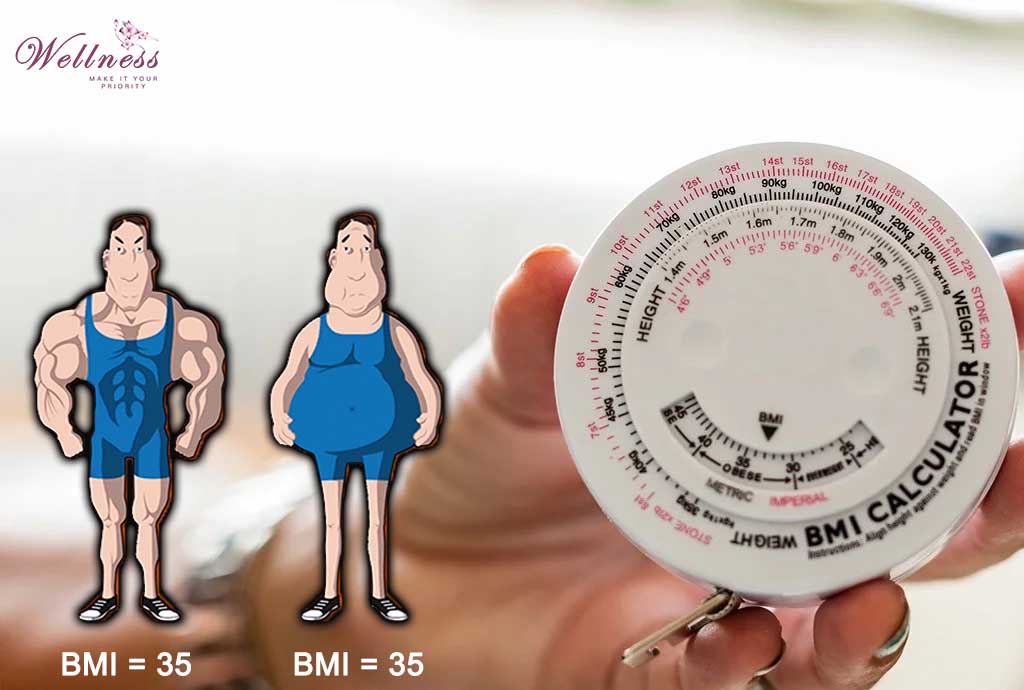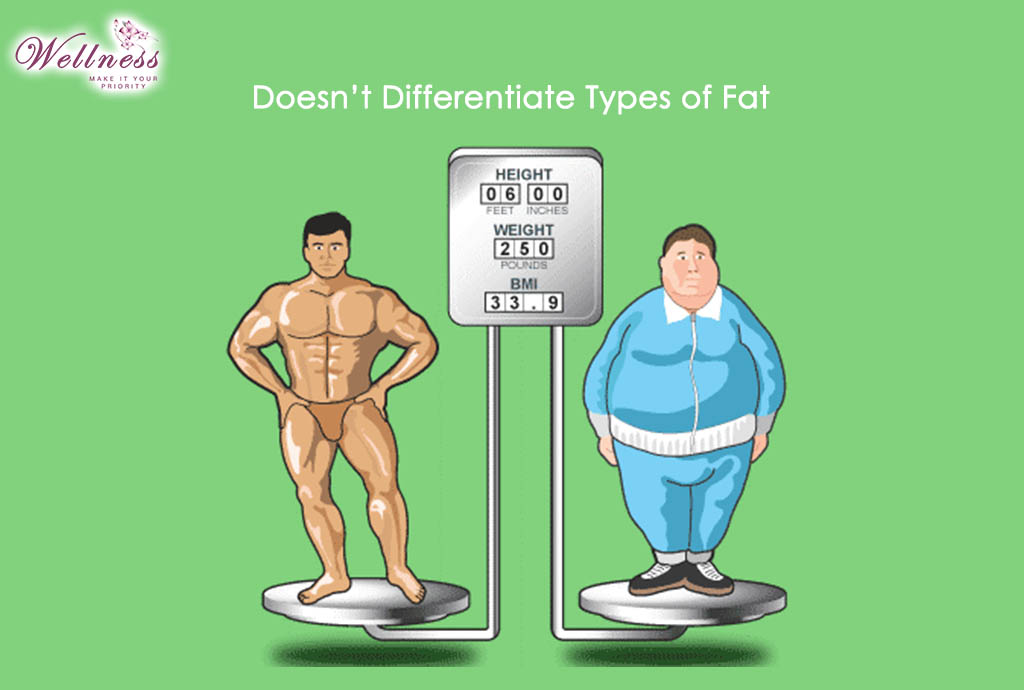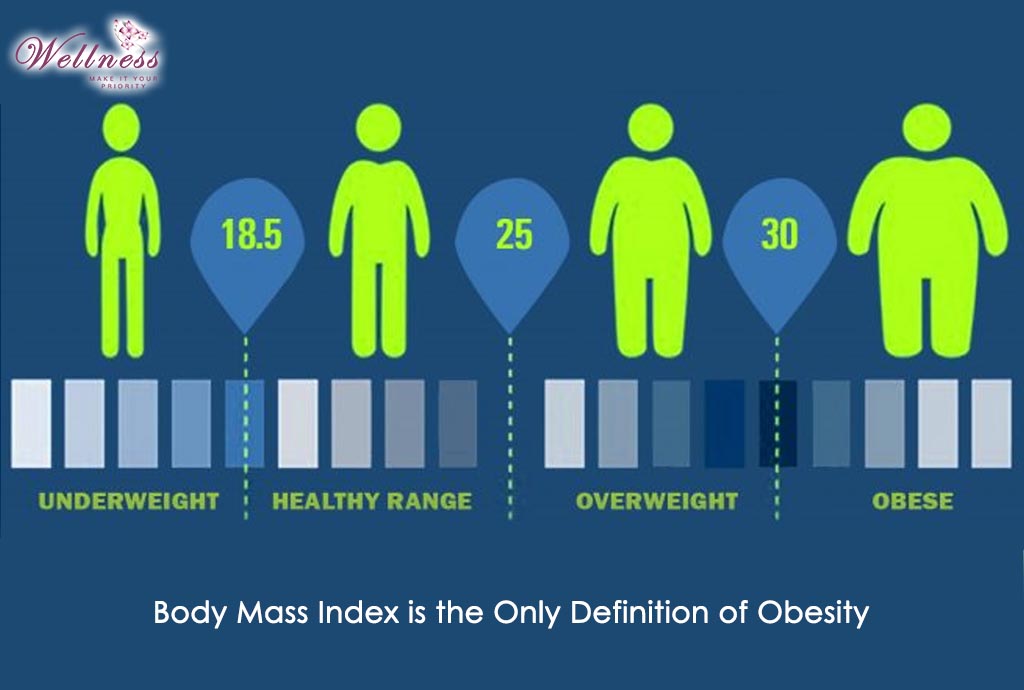Researchers concluded BMI or Body Mass Index is an inaccurate measurement of body fat content. This is because BMI only considers the weight and height of a person – without taking bone density, muscle mass, sex and racial differences into account.
After every few months, experts made the same comment “BMI is flawed”. The news gets hyped and becomes the talk of the town, but after some time all goes quiet. Here in this article, 12 Reasons Why BMI Formula is Misleading, there is everything you need to know about BMI flaws.
Table of Contents
Fast Facts
- BMI or Body Mass Index is not an accurate measurement of health as it does not consider body fat distribution or body fat percentage.
- BMI cannot validly predict the health of versatile races and demographics; this is because it was created with white European data only.
- There are more accurate measurements than BMI, to predict health outcomes, for instance, waist circumference, cholesterol levels, and blood pressure.
How BMI Body Mass Index Formula work?

BMI draws four overall measurement classes, underweight, normal weight, overweight, and Obesity classes, just by using the formula;
BMI = Weight (kg) / Height (m) 2
If you get a BMI less than 18 it means you are underweight, and if you have a BMI value between 18.5 and 25 you have a normal weight. If you get a BMI ranging from 25 to 30 you are overweight, and anybody who has a BMI value of more than 30, starts falling into different classes of obesity.
12 Reasons Why BMI Formula is Misleading
1. The Formula Has No Scientific Basis

To calculate Body Mass Index or BMI, you only take your weight in kg (kilograms) and divide it by squared height in m (meters). The numeric result will put you into any of the four BMI structured categories. Accordingly, where is the scientific reasoning behind the BMI formula? Evidently, there isn’t any. Mathematician Adolphe Quetelet – who created the BMI equation around 200 years ago – had no medical background and structured the formula almost out of nowhere.
The BMI formula was created only to help the government with easy and quick ways of obesity measurement in the general population. This is among the main reasons why BMI formula is misleading.
2. It Fails for Very Tall and Very Short People

According to a professor at the University of Oxford, the term squared height divides weight by too little when people are tall and by too much when they are short. This means tall people are often advised that they are fatter when they are not, and short people are told that they are thinner when actually they are not healthy. Hence, BMI can put unnecessary pressure on taller people that they need to lose weight, and might become a hope for shorter people when actually they need to lose weight.
3. Formula Makes Unreasonable Assumptions

One of the main reasons why BMI formula is misleading – the classifications and formula of BMI were established around 200 years ago. If it were created now – probably wouldn’t be executed on the basis of this strategy “how a normal person looks like”. Especially when we know there is no such thing as “a perfectly normal person”. all individuals are different on the basis of genetics, bone structure, ethnicity, gender, etc.
The major postulation of BMI is that all humans should lead a sedentary life. The formula continues to remain quite accurate – as it works for average individuals. In actuality, BMI is not capable of calculating everyone’s body mass – for instance when a person is a weightlifter or athlete with muscles – not a couch potato.
4. Numerous Elite Athletes are Obese – As Per BMI Formula

A simple example for your better understanding of how weight and metabolic health are not correlated is – professional football players. Almost all of them have muscle mass which can propel their weight into the territory of obesity – without the fact that they are fit and healthy. According to the American Medical Association journal – BMI measurement factors (weight and height) states – average football players are obese.
5. It Cannot Distinguish Between Muscle and Fat

It is supposed that BMI measures body fat but in reality, it does not – as it does not take gender, actual body fat, body frame, gender, etc. into account. The reason is the body mass index is all about what is your height and how many pounds/kilograms you carry. Technically, it takes lean muscle mass similar to fat – for instance, a 180-pound man with muscle is no better in the eyes of BMI than a similar-weight person with only fat.
Why I Am Not Losing Weight
If you want to know more about the reasons you are not losing weight, click on the link above. It’s a complete guide to the problems – that you might be overlooking while trying to lose weight.
6. Weight is not an Accurate Measurement of Metabolic Health

The University of Pennsylvania conducted a study in 2013 – BMI evaluates wrong stories about the health of around 20% of Americans. Your weight is not always directly proportional to your metabolic health – like your risk of high cholesterol, type 2 diabetes, and high blood pressure.
The same results were repeated in the 2016 large-scale study – that was published in the International Journal of Obesity – only 70% of normal-weight people according to BMI, fall under healthy metabolic measures. Similarly, BMI based 47% of overweight, 30% obese, and 16% extremely obese people were metabolically healthy. This translated to millions of people who are relentlessly heckled by public health officials for weight loss – are not really in danger of early death.
7. It’s an Illusion – Obesity has Specific Numerical Thresholds

If you are a woman of 5-foot-6-inch height and 149 pounds weight – you may fall in the category “normal”. But if you gain just two pounds, you will get 25 BMI, which means “overweight category”. Weight can fluctuate for numerous reasons and can be of different types like muscle mass, water weight, etc. It’s like you are gaining muscles due to working out and falling under the “overweight” spectrum.
On the contrary, if you are living a comparatively sedentary lifestyle – you might have been overweight all along – but that’s not on your BMI scale. Therefore, another reason why the BMI formula is misleading is that it does not have a specific decimal point to specify whether you are healthy or unhealthy. This is a part of the reasons why BMI formula is misleading.
8. Formula Does not Consider Your Fat Distribution or Waist Size

Studies suggest measuring “waist size” is a better indicator of obesity compared to BMI. According to the British Nutrition Foundation – WHtR (waist-to-height ratio) keeps your waist circumference to half or less than your height – it can help increase the life expectancy of all individuals in the world.
According to studies, WHtR was more effective in predicting diabetes, strokes, and blood pressure than BMI. The reason is;
Measurement of your waistline is a more accurate method to estimate the type of body fat – fat distribution around your body
The fat that tends to occupy the waist area – belly fat – can affect organs in terms of cardiometabolic risk – such as the kidneys, liver, and heart – than the fat around the bottom and hips.
9. Doesn’t Differentiate Types of Fat

There are four types of body fat – if you didn’t already know – a few of them are “good” and some are “bad”. For instance, a study in 2013 suggested that people with more belly fat (visceral fat) had worse survival rates – in comparison to those with more rear or thigh fat. As belly fat is embedded in your organs and muscles rather than just sitting under the skin – it can be more harmful. Unfortunately, BMI does not calculate the type of fat your body has – so people who are using BMI-only measurements are most likely missing the key information.
10. Body Mass Index is the Only Definition of Obesity

CDC (Centers for Disease Control and Prevention) centers solely define obesity (adult obesity) on BMI – even when we know it cannot predict your health completely. The problem is that as the government legitimizes the flawed calculations – other regulators also use it as a part of their working criteria.
11. Public Health Officials and Companies Can Exploit the Measurement

As BMI is used for overweight measurement – insurers, corporations, public health officials, and even the government rely on the formula for regulations. Unfortunately, as it does not represent the truth – some individuals can be unfairly and disproportionately affected by such regulations. For instance – some of the Affordable Care Act and rules clauses proposed by the EEOC (Equal Employment Opportunity Commission), allow employers to charge 30 percent more from employees who are “unhealthy” than those who are “healthy” for healthcare costs. This is only because they are distinguished according to the BMI measurement classifications.
12. Reducing BMI Levels Doesn’t Ensure Health Benefits

However, a high level of BMI is correlated with negative health issues – lowering the number of your BMI does not always solve obesity-related issues. This is another one of the reasons why BMI formula is misleading. A 2016 study proposed – that a twin with a higher BMI was at higher diabetes risk than a twin with a lower BMI – but this was not the case when comparing the heart attack risks. This result suggests – that numerous factors affect our health than just a BMI number.
Frequently Asked Questions
How is BMI misleading?
BMI concludes results with only Height and Weight values – without considering body fat content, racial and sex differences, muscle mass, body composition, and bone density. Researchers have found that the formula is fine for average people but does not work always, such as for athletes, etc. For more details, you can have a look at the article above for reasons why BMI formula is misleading.
When BMI is not accurate?
Experts have found BMI value is inaccurate in numerous cases – as explained in the above section of reasons why BMI formula is misleading. For instance, if an athlete and a fat person (belly fat) are at the same weight – they’ll be obese on the BMI scale without the fact that the athlete’s weight is due to muscle mass.
Which is better BMI or weight circumference?
Measuring weight circumference in comparison to BMI is simple and more effective – because it helps in assessing body fat distribution accurately. Body fat specifically belly fat – is associated with cardiovascular risk which cannot be identified through the BMI formula – as described in the above section of reasons why BMI formula is misleading.


